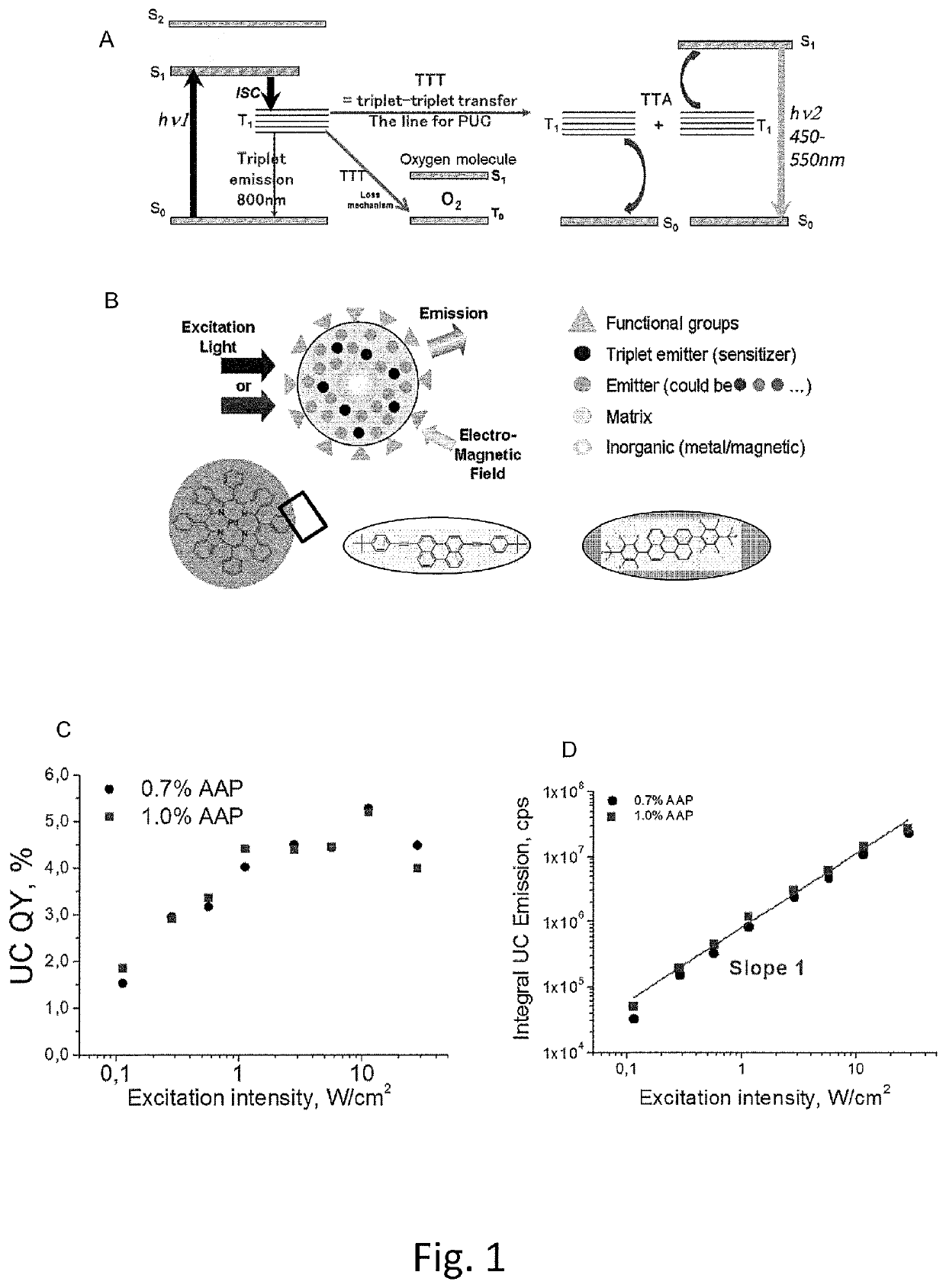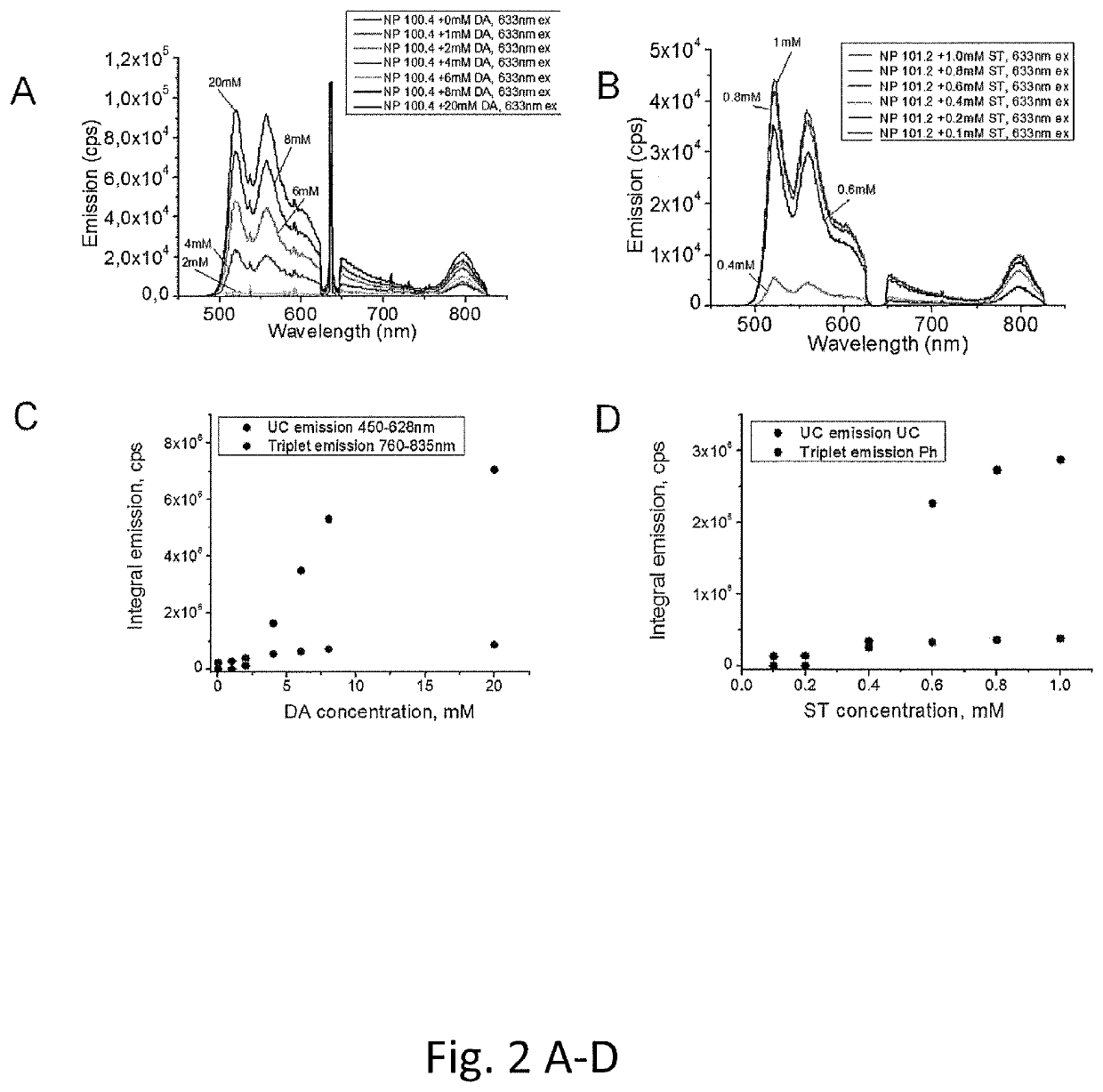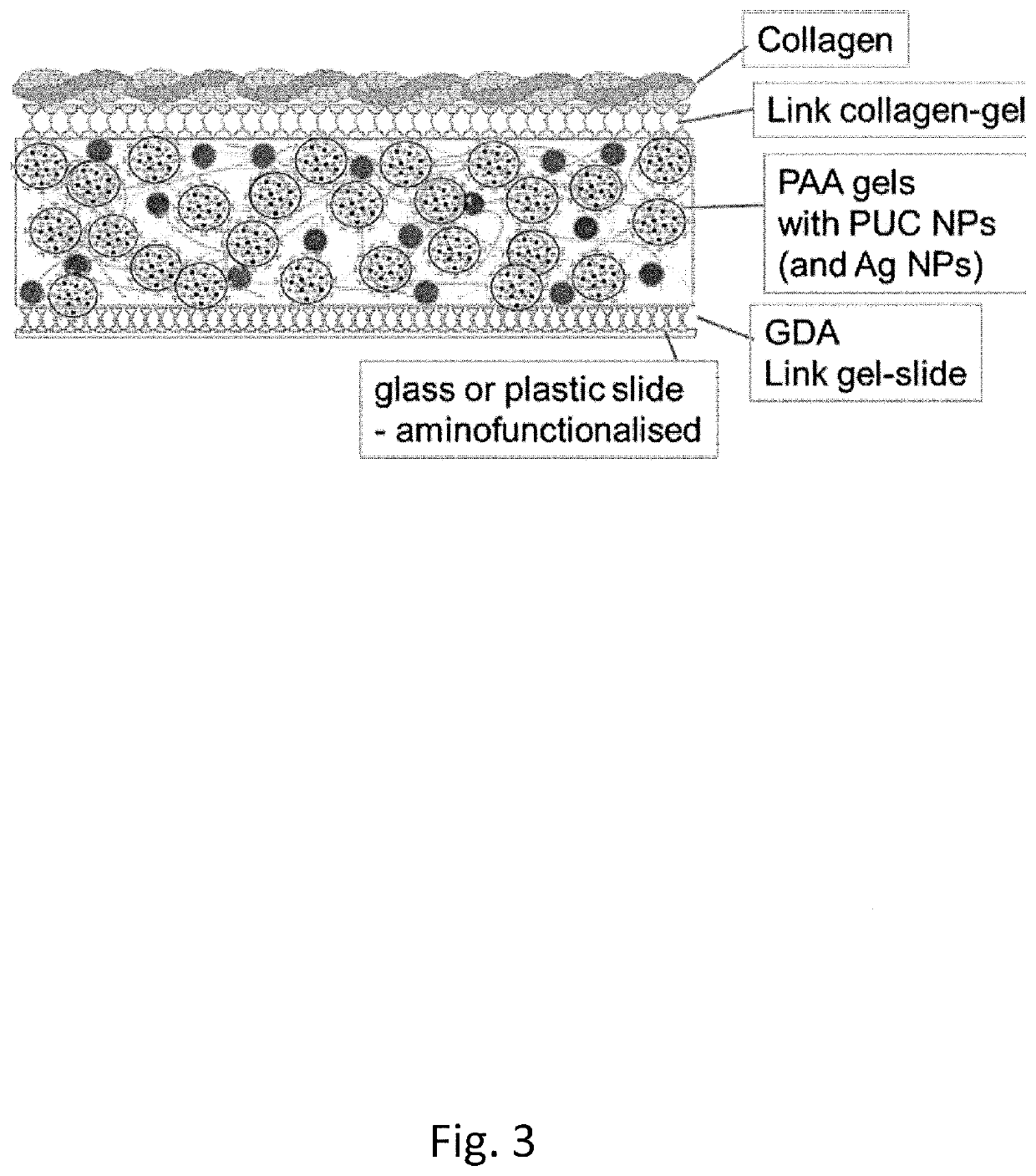Sensor for the detection of biomolecules
- Summary
- Abstract
- Description
- Claims
- Application Information
AI Technical Summary
Benefits of technology
Problems solved by technology
Method used
Image
Examples
embodiments
[0226]1. A sensor for the detection of an analyte, said sensor including a biocompatible sensing layer including[0227]a matrix, wherein said matrix is a polymer matrix or polymer gel matrix, and[0228]organic nanoparticles embedded in said matrix, wherein said organic nanoparticles are capable of emitting light, particularly by photon up-conversion emission in the presence of said analyte, but not in the absence of said analyte,
wherein said sensor optionally further includes plasmonic metal nanoparticles, and
wherein said sensor optionally further includes one or several cell adhesion layer(s) and / or one or several enhancement layers.[0229]2. The sensor according to embodiment 1, wherein said analyte is a biomolecule, wherein, in particular, said analyte is selected from the group consisting of neurotransmitters, antioxidants, reactive oxygen species and hormones, more particularly a neurotransmitter selected from the group consisting of serotonin, dopamine, norepinephrine and epineph...
example 1
Preparation of Nanoparticles
[0309]This example describes the optimised production of examples of multicomponent nanoparticles in accordance with the present disclosure. These special, original designed nanoparticles are prepared by rapidly mixing water into a cooled, stirring, solution of an optimised organic matrix, optimised surface stabiliser or dispersant, dyes-including specially developed hydrophobic dyes with even more efficient incorporation) an emitter and a sensitizer in dry THF under an inert atmosphere. In addition to the organic components, silver nanoparticles can be added to the organic phase before mixing. The procedure and the components of the nanoparticles were optimized for sensitivity, increase in upconversion signal and size, which also effects transparency of the solution.
[0310]The size and size distribution of the nanoparticles produced in this method is very good if the aqueous phase and organic phase are chilled and mixed very rapidly. To accomplish this tw...
example 2
Preparation of an Example of a Sensor Comprising an Emissive Sensing Layer
[0346]Here an exemplary method is presented to produce transparent emissive sensing layers (ESLs) composed of emissive nanoparticles as prepared in accordance with the present disclosure, i.e. photon upconversion nanoparticles (PUC NPs) embedded into a polymer matrix. The ESLs aim for the quantitative detection of different biomolecules secreted from living cells in cell culture with high spatiotemporal resolution. To achieve these goals the layers necessitate to exhibit excellent homogeneity, good stability under cell culture conditions as well as a high sensitivity and selectivity towards the target molecules.
[0347]This example describes an optimization of the sensing layer. Especially the homogeneity and the UC signal achieved by the layers in this example are very good. Additionally, stiffness of the layers can be tuned easily. The optimization includes change from a biopolymer matrix towards an organic po...
PUM
 Login to View More
Login to View More Abstract
Description
Claims
Application Information
 Login to View More
Login to View More - R&D Engineer
- R&D Manager
- IP Professional
- Industry Leading Data Capabilities
- Powerful AI technology
- Patent DNA Extraction
Browse by: Latest US Patents, China's latest patents, Technical Efficacy Thesaurus, Application Domain, Technology Topic, Popular Technical Reports.
© 2024 PatSnap. All rights reserved.Legal|Privacy policy|Modern Slavery Act Transparency Statement|Sitemap|About US| Contact US: help@patsnap.com










